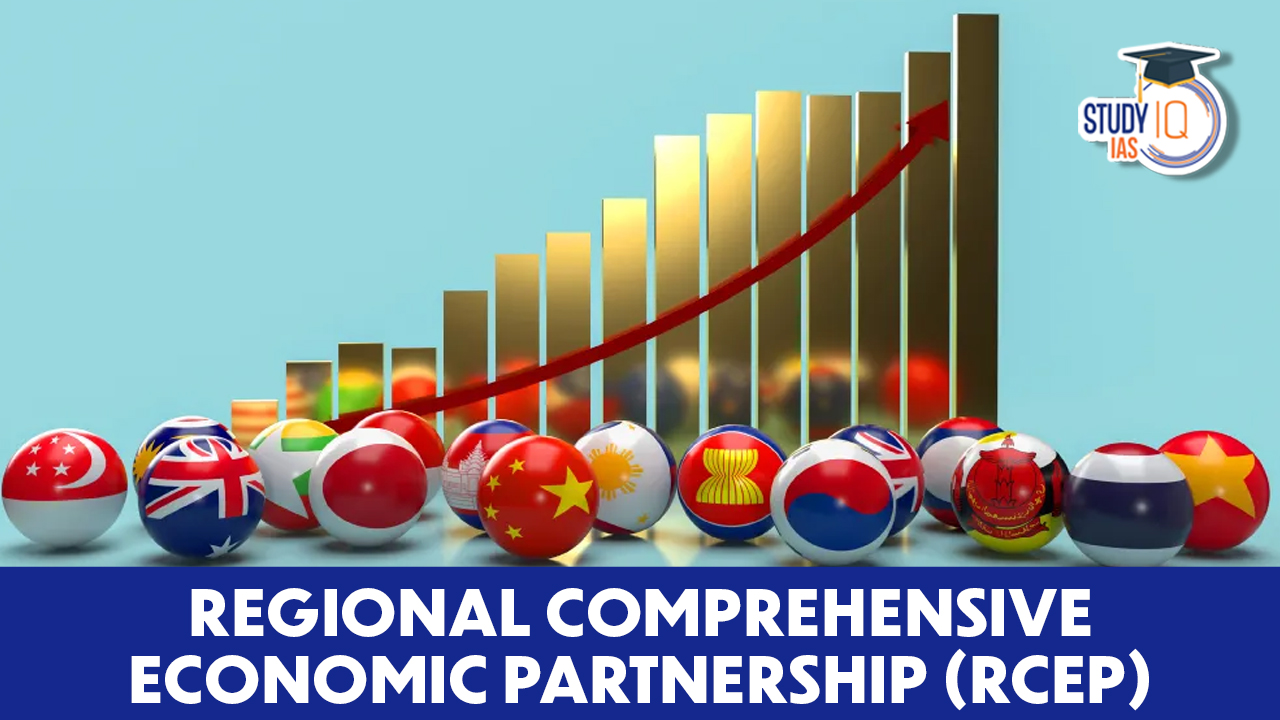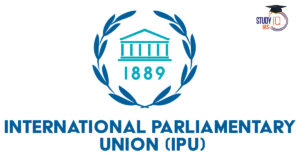Table of Contents
Regional Comprehensive Economic Partnership (RCEP)
The Regional Comprehensive Economic Partnership (RCEP) has emerged as a significant economic agreement in recent years, captivating attention and generating discussions worldwide. As countries strive to deepen their economic integration and strengthen regional cooperation, RCEP stands as a landmark initiative. It brings together 15 countries from the Asia-Pacific region, comprising diverse economies and cultures.
The agreement holds the potential to reshape regional trade, investment, and economic dynamics, paving the way for greater opportunities and challenges. With its expansive reach and far-reaching implications, RCEP has become a topic of intense interest and analysis, shaping the future of economic relationships among participating nations.
Read about: International Organizations and their Headquarters
What is RCEP?
The Regional Comprehensive Economic Partnership (RCEP) is a free trade agreement (FTA) that was signed on November 15, 2020, by 15 countries in the Asia-Pacific region. It is a landmark agreement that aims to enhance regional economic integration and promote trade and investment among participating nations.
Read about: Asia Pacific Economic Cooperation
RCEP Member Countries
The Regional Comprehensive Economic Partnership (RCEP) is a free trade agreement involving 15 member countries from the Asia-Pacific region. These member countries are:
| RCEP Member Countries | |
| ASEAN Members | Non-ASEAN Members |
|
|
The RCEP member countries include the ten ASEAN Countries (Association of Southeast Asian Nations) as well as China, Japan, South Korea, Australia, and New Zealand. RCEP covers a wide range of areas, including trade in goods and services, investment, intellectual property, e-commerce, and more.
Read about: Countries and Capitals
Objectives of RCEP
The Regional Comprehensive Economic Partnership (RCEP) has several key objectives that guide its formation and implementation. The main objectives of RCEP are:
| Objective | Details |
| Economic Integration | RCEP aims to enhance economic integration among the participating countries, creating a more seamless and interconnected regional market. By reducing trade barriers, harmonizing regulations, and promoting liberalization, RCEP seeks to facilitate the flow of goods, services, and investments across borders. |
| Trade Facilitation | RCEP aims to simplify and streamline trade procedures, customs protocols, and documentation requirements. The agreement seeks to promote trade facilitation measures, such as simplified customs clearance, harmonized rules of origin, and electronic documentation, to reduce transaction costs and enhance efficiency in trade operations. |
| Market Access | RCEP aims to improve market access for goods and services among member countries. By reducing or eliminating tariffs, non-tariff barriers, and trade restrictions, RCEP seeks to create a more level playing field for businesses and increase market opportunities for exporters and importers within the region. |
| Investment Promotion | RCEP strives to promote and facilitate foreign direct investment (FDI) among member countries. It aims to create a favourable and predictable investment climate by providing greater protection and transparency for investors, facilitating investment flows, and promoting collaboration in areas such as technology transfer, research and development, and innovation. |
| Economic Cooperation | RCEP aims to enhance regional economic cooperation among member countries. It seeks to foster partnerships in various sectors, including agriculture, manufacturing, services, technology, and intellectual property. RCEP promotes collaboration in areas such as supply chain connectivity, industry standards, innovation, and sustainable development. |
| Rules and Standards Alignment | RCEP aims to harmonize and align rules, regulations, and standards among member countries. The agreement seeks to establish common frameworks for trade, intellectual property, e-commerce, competition, and other areas to facilitate smoother interactions and reduce trade barriers caused by divergent regulations. |
| Inclusive and Sustainable Development |
RCEP recognizes the importance of inclusive and sustainable development. It aims to promote social and economic inclusivity, address development gaps, and ensure that the benefits of regional integration are shared equitably among member countries. RCEP encourages sustainable practices, environmental protection, and cooperation in areas such as climate change mitigation and adaptation. |
Read about: NATO Countries
Regional Comprehensive Economic Partnership History
The history and background of the Regional Comprehensive Economic Partnership (RCEP) can be traced back to the growing momentum of economic integration in the Asia-Pacific region. As countries recognized the potential benefits of deeper regional cooperation, discussions began to explore the feasibility of a comprehensive trade agreement that would enhance economic integration and facilitate trade and investment flows.
The idea of RCEP took shape in 2011 when ASEAN (Association of Southeast Asian Nations) proposed a framework for a regional trade agreement that would include ASEAN member countries and its six free trade agreement partners: China, Japan, South Korea, Australia, New Zealand, and India. The objective was to create an inclusive and comprehensive agreement that would cover a wide range of areas, including trade in goods and services, investment, intellectual property, and economic cooperation.
Over the years, negotiations and consultations took place among the participating countries to address various issues and concerns and work towards a mutually beneficial agreement. The negotiations were guided by the principles of openness, transparency, and inclusiveness, with the aim of balancing the interests of all member countries.
After several rounds of negotiations, the RCEP agreement was finally signed on November 15, 2020, marking a significant milestone in regional economic integration. The signing of RCEP brought together 15 countries in the Asia-Pacific region, creating the world’s largest trading bloc. The agreement covers a population of around 2.2 billion people and accounts for about 30% of the global GDP.
Read about: BIMSTEC Countries
RCEP and India
India’s involvement in the Regional Comprehensive Economic Partnership (RCEP) has been a subject of significant discussion and analysis. India was initially part of the negotiations for RCEP and played an active role in shaping the agreement. However, in November 2019, India decided not to join the final agreement due to concerns related to market access, trade deficits, and safeguarding its domestic industries.
India’s decision not to join RCEP was influenced by several factors. One of the key concerns was the potential impact on India’s domestic industries, particularly the agricultural and manufacturing sectors. There were apprehensions that increased competition from other RCEP member countries, particularly China, could lead to a surge in imports and adversely affect domestic producers.
Another concern was the asymmetry in market access. India felt that the proposed trade liberalization measures in RCEP were not adequately balanced and could lead to a disproportionate influx of goods from other countries without providing equivalent market access for Indian exports. This raised concerns about exacerbating India’s trade deficit.
Furthermore, India sought stronger safeguards to protect its industries from sudden surges in imports, particularly in times of economic distress. It wanted to ensure that the agreement had robust mechanisms to address issues related to unfair trade practices, safeguarding domestic industries, and maintaining the ability to adopt measures for national development objectives.
India has consistently emphasized the need for a balanced and mutually beneficial agreement that takes into account the diverse economic structures and development stages of member countries. It has advocated for addressing concerns related to market access, trade imbalances, and the protection of sensitive sectors.
While India has chosen not to be a part of the RCEP agreement, it has expressed its commitment to engage with the region and explore avenues for enhanced economic cooperation. The focus is on strengthening bilateral and regional trade relationships, promoting investments, and fostering economic partnerships through other mechanisms.
India’s decision not to join RCEP does not imply a disengagement from the Asia-Pacific region. Instead, it reflects a cautious approach to ensure that its economic interests and developmental priorities are protected. India continues to pursue its “Act East” policy, which aims to deepen economic integration, enhance connectivity, and strengthen diplomatic ties with countries in the region.
Read about: G7 Countries
Regional Comprehensive Economic Partnership UPSC
The topic of Regional Comprehensive Economic Partnership (RCEP) is important for UPSC (Union Public Service Commission) as it is relevant to the UPSC Syllabus and can feature in various stages of the UPSC examination. RCEP is a significant economic agreement that impacts regional trade, investment, and economic cooperation. UPSC aspirants need to be aware of the geopolitical and economic implications of RCEP, as it relates to international relations, trade policies, and economic integration. Understanding RCEP is crucial for candidates preparing for UPSC as it demonstrates their grasp of current affairs, and global economic trends, and their ability to analyze the implications of international agreements. UPSC Online Coaching and UPSC Mock Test can provide aspirants with the necessary knowledge and practice to tackle questions related to RCEP effectively.
Read about: United Nations Development Programme


 Foreign Contribution Regulation Act (FCR...
Foreign Contribution Regulation Act (FCR...
 International Standards of Accounting an...
International Standards of Accounting an...
 150th Summit of Inter-Parliamentary Unio...
150th Summit of Inter-Parliamentary Unio...





















